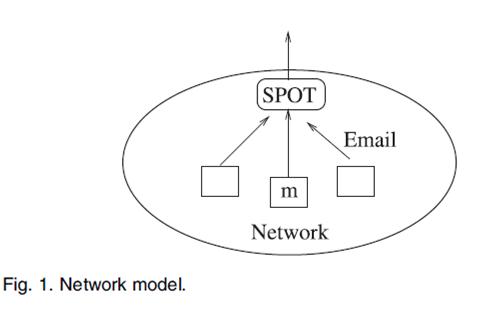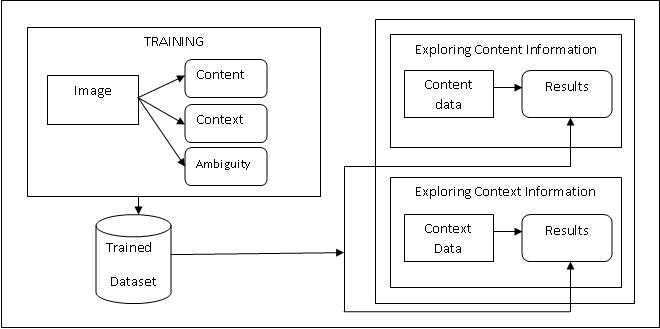Adaptive Position
Update for Geographic Routing in Mobile Ad Hoc
Networks
ABSTRACT:
In
geographic routing, nodes need to maintain up-to-date positions of their
immediate neighbors for making effective forwarding decisions. Periodic
broadcasting of beacon packets that contain the geographic location coordinates
of the nodes is a popular method used by most geographic routing protocols to
maintain neighbor positions. We contend and demonstrate that periodic beaconing
regardless of the node mobility and traffic patterns in the network is not
attractive from both update cost and routing performance points of view. We
propose the Adaptive Position Update (APU) strategy for geographic routing,
which dynamically adjusts the frequency of position updates based on the
mobility dynamics of the nodes and the forwarding patterns in the network. APU is
based on two simple principles: 1) nodes whose movements are harder to predict
update their positions more frequently (and vice versa), and (ii) nodes closer
to forwarding paths update their positions more frequently (and vice versa).
Our theoretical analysis, which is validated by NS2 simulations of a well-known
geographic routing protocol, Greedy Perimeter Stateless Routing Protocol
(GPSR), shows that APU can significantly reduce the update cost and improve the
routing performance in terms of packet delivery ratio and average end-to-end
delay in comparison with periodic beaconing and other recently proposed
updating schemes. The benefits of APU are further confirmed by undertaking
evaluations in realistic network scenarios, which account for localization
error, realistic radio propagation, and sparse network.
EXISTING SYSTEM:
WITH
the growing popularity of positioning devices (e.g., GPS) and other
localization schemes, geographic routing protocols are becoming an attractive choice
for use in mobile ad hoc networks. The underlying principle used in these
protocols involves selecting the next routing hop from among a node’s neighbors,
which is geographically closest to the destination. Since the forwarding
decision is based entirely on local knowledge, it obviates the need to create
and maintain routes for each destination. By virtue of these characteristics, position-based
routing protocols are highly scalable and particularly robust to frequent
changes in the network topology. Furthermore, since the forwarding decision is made
on the fly, each node always selects the optimal next hop based on the most
current topology. However, in situations where nodes are mobile or when nodes
often switch off and on, the local topology rarely remains static. Hence, it is
necessary that each node broadcasts its updated location information to all of
its neighbors. These location update packets are usually referred to as
beacons. In most geographic routing protocols, beacons are broadcast
periodically for maintaining an accurate neighbor list at each node.
DISADVANTAGES OF EXISTING SYSTEM:
Position
updates are costly in many ways. Each update consumes node energy, wireless
bandwidth, and increases the risk of packet collision at the medium access
control (MAC) layer. Packet collisions cause packet loss which in turn affects
the routing performance due to decreased accuracy in determining the correct
local topology (a lost beacon broadcast is not retransmitted). A lost data
packet does get retransmitted, but at the expense of increased end-to-end
delay. Clearly, given the cost associated with transmitting beacons, it makes
sense to adapt the frequency of beacon updates to the node mobility and the
traffic conditions within the network, rather than employing a static periodic
update policy. For example, if certain nodes are frequently changing their
mobility characteristics (speed and/or heading), it makes sense to frequently
broadcast their updated position. However, for nodes that do not exhibit
significant dynamism, periodic broadcasting of beacons is wasteful. Further, if
only a small percentage of the nodes are involved in forwarding packets, it is
unnecessary for nodes which are located far away from the forwarding path to
employ periodic beaconing because these updates are not useful for forwarding
the current traffic.
PROPOSED SYSTEM:
In
this paper, we propose a novel beaconing strategy for geographic routing
protocols called Adaptive Position Updates strategy (APU).
APU
incorporates two rules for triggering the beacon update process. The first
rule, referred as Mobility Prediction (MP), uses a simple mobility prediction
scheme to estimate when the location information broadcast in the previous
beacon becomes inaccurate. The next beacon is broadcast only if the predicted
error in the location estimate is greater than a certain threshold, thus tuning
the update frequency to the dynamism inherent in the node’s motion.
The
second rule, referred as On-Demand Learning (ODL), aims at improving the
accuracy of the topology along the routing paths between the communicating
nodes. ODL uses an on-demand learning strategy, whereby a node broadcasts beacons
when it overhears the transmission of a data packet from a new neighbor in its
vicinity. This ensures that nodes involved in forwarding data packets maintain
a more up-to date view of the local topology. On the contrary, nodes that are
not in the vicinity of the forwarding path are unaffected by this rule and do
not broadcast beacons very frequently.
ADVANTAGES OF PROPOSED SYSTEM:
Our
scheme eliminates the drawbacks of periodic beaconing by adapting to the system
variations.
The simulation
results show that APU can adapt to mobility and traffic load well. For each
dynamic case, APU generates less or similar amount of beacon overhead as other
beaconing schemes but achieve better performance in terms of packet delivery
ratio, average end-to-end delay and energy consumption. In the second set of simulations,
we evaluate the performance of APU under the consideration of several real-world
effects such as a realistic radio propagation model and localization errors.
The
extensive simulation results confirm the superiority of our proposed scheme
over other schemes. The main reason for all these improvements in APU is that
beacons generated in APU are more concentrated along the routing paths, while
the beacons in all other schemes are more scattered in the whole network. As a
result, in APU, the nodes located in the hotspots, which are responsible for
forwarding most of the data traffic in the network have an up-to-date view of
their local topology, thus resulting in improved performance.
SYSTEM REQUIREMENTS:
HARDWARE REQUIREMENTS:
·
System : Pentium IV 2.4 GHz.
·
Hard Disk : 40 GB.
·
Monitor :
15 inch VGA Colour.
·
Mouse :
Logitech Mouse.
·
Ram : 512 MB
·
Keyboard :
Standard Keyboard
SOFTWARE REQUIREMENTS:
·
Operating System : Windows XP.
·
Coding Language : ASP.NET, C#.Net.
·
Database :
SQL Server 2005
REFERENCE:
Quanjun
Chen, Member, IEEE, Salil S. Kanhere, Senior Member, IEEE, and
Mahbub
Hassan, Senior Member, IEEE, “Adaptive Position Update for Geographic Routing
in Mobile Ad Hoc Networks”, IEEE
TRANSACTIONS ON MOBILE COMPUTING, VOL. 12, NO. 3, MARCH 2013.




